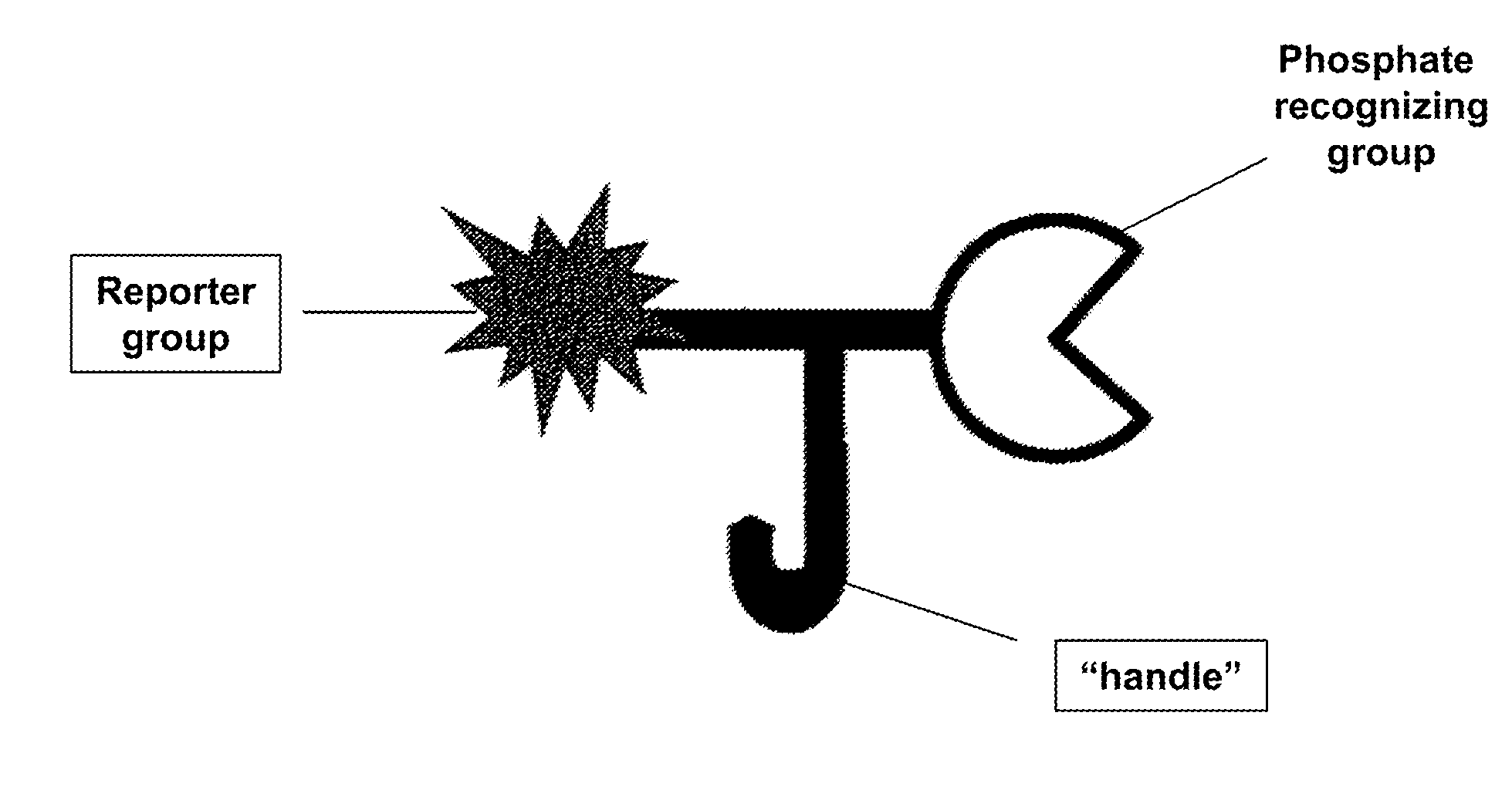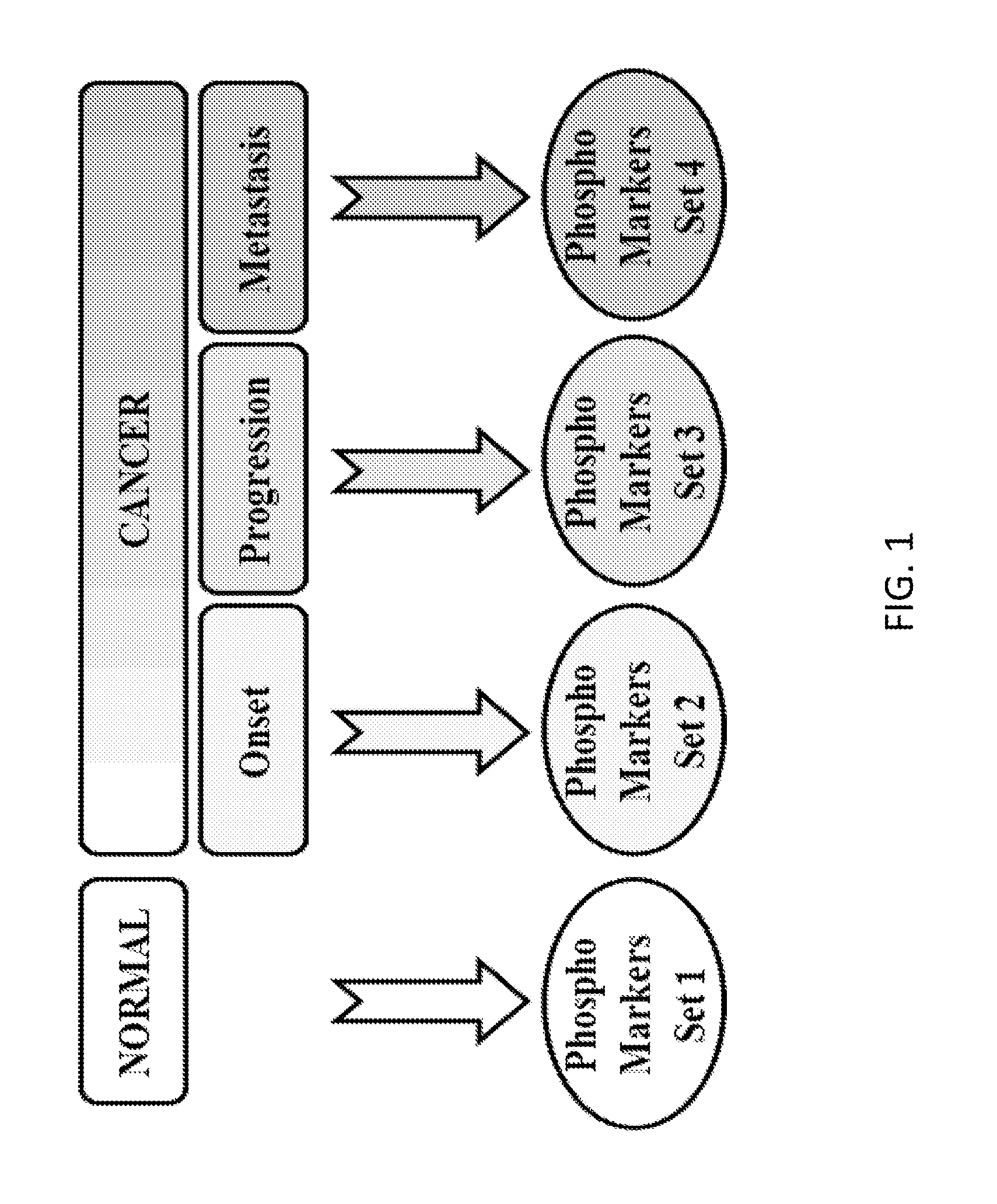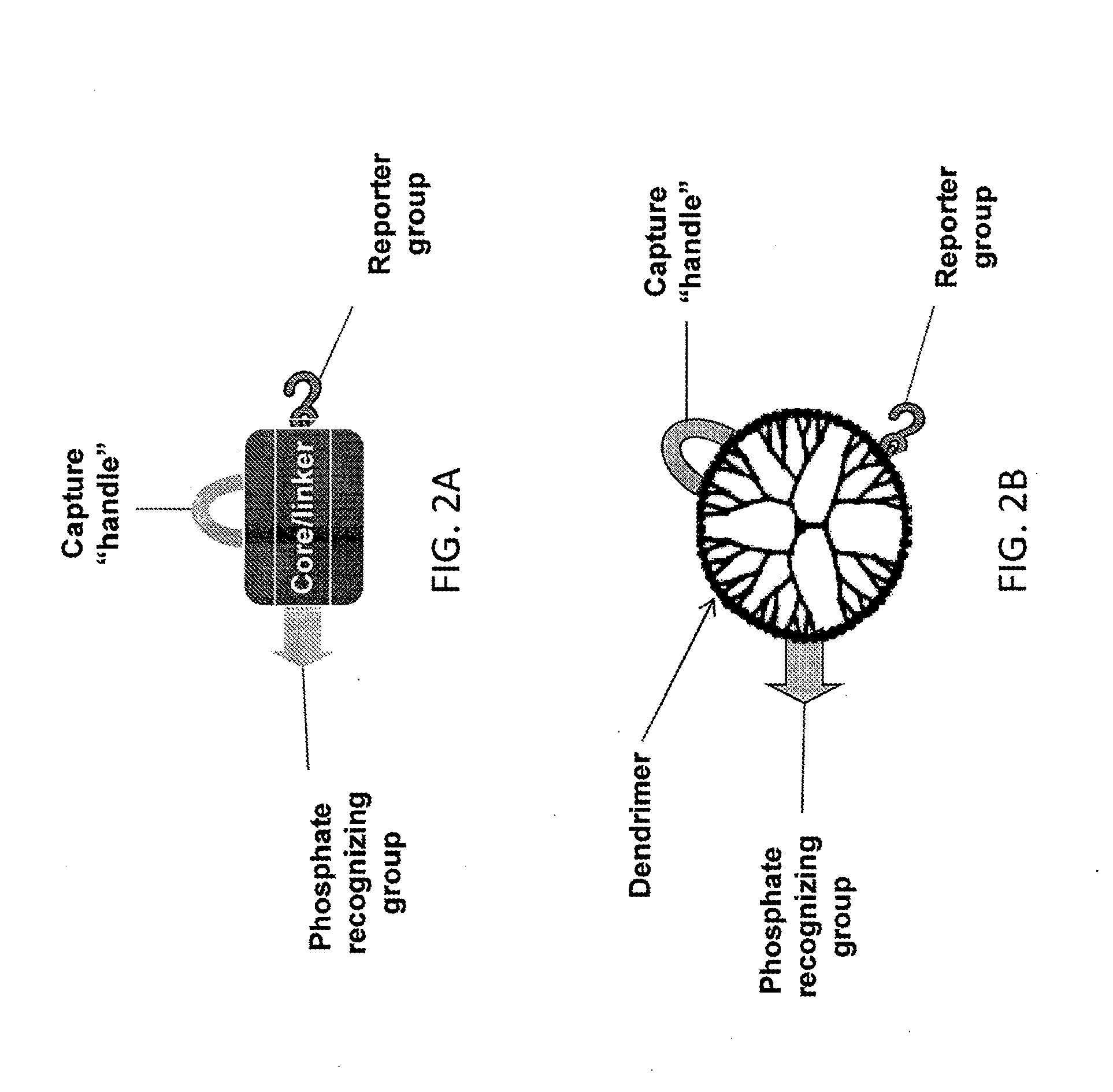Reagents and methods for phosphorylation/dephosphorylation analyses
a phosphorylation and phosphorylation technology, applied in the field of phosphorylation/dephosphorylation analysis, can solve the problems of partiality of antibodies, many groups do not have access to such instruments, and difficult system analysis, etc., to achieve maximum binding and/or the generation of detectable signals
- Summary
- Abstract
- Description
- Claims
- Application Information
AI Technical Summary
Benefits of technology
Problems solved by technology
Method used
Image
Examples
Embodiment Construction
Materials and Methods
[0097]All reagents for pIMAGO synthesis, protein dephosphorylation, Syk inhibitor, and all standard proteins were obtained from Sigma-Aldrich. SnakeSkin dialysis tubing, HRP substrates, SuperBlock T20 blocking buffer, and 96-well plates were bought from Pierce. The plate reader was obtained from Biotek, and centrifugal filter units from Millipore. Purified Acm1 was generously provided in phosphorylated and unphosphorylated forms by the Hall group (Purdue University).
1. Synthesis of Phosphorylation Detect No Reagents Suitable for Blotting and Imaging on Membrane.
[0098]Dried 200 μl of PAMAM (polyamidoamine) dendrimer generation 4 solution (provided as 10% (wt / vol) in methanol; Sigma-Aldrich) in a microfuge tube. Resolubilized dried dendrimer in 3 ml of 150 mM MES buffer in water (2-(N-morpholino)ethanesulfonic acid; pH 5.5) and transferred into a 10-ml round-bottom flask with a magnetic stir bar. Added 6.5 mg of 2-carboxyethyl-phosphonic acid, 10 mg of N-hydroxysu...
PUM
| Property | Measurement | Unit |
|---|---|---|
| molecular weight | aaaaa | aaaaa |
| molecular weight | aaaaa | aaaaa |
| pH | aaaaa | aaaaa |
Abstract
Description
Claims
Application Information
 Login to View More
Login to View More - R&D
- Intellectual Property
- Life Sciences
- Materials
- Tech Scout
- Unparalleled Data Quality
- Higher Quality Content
- 60% Fewer Hallucinations
Browse by: Latest US Patents, China's latest patents, Technical Efficacy Thesaurus, Application Domain, Technology Topic, Popular Technical Reports.
© 2025 PatSnap. All rights reserved.Legal|Privacy policy|Modern Slavery Act Transparency Statement|Sitemap|About US| Contact US: help@patsnap.com



